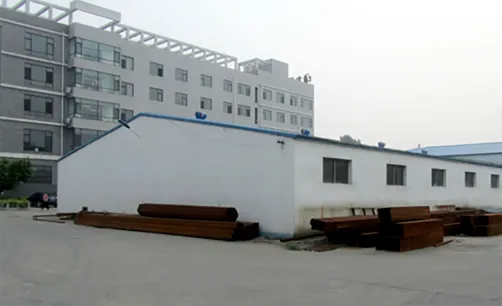Νοέ . 30, 2024 22:06 Back to list
Creative Uses for Gabion Boxes in Landscaping and Erosion Control Solutions
Understanding Gabion Boxes A Versatile Solution for Modern Engineering
In contemporary engineering and landscape design, gabion boxes have emerged as a favored choice for various applications, ranging from erosion control to aesthetic enhancements in public spaces. These structures, composed of wire mesh filled with rocks or other materials, offer a unique blend of functionality, durability, and environmental harmony. This article delves into the concept of gabion boxes, their applications, benefits, and considerations for implementation.
What are Gabion Boxes?
Gabion boxes are large cages or baskets made of strong wire mesh, typically made from galvanized steel or PVC-coated wire to resist corrosion. These boxes are filled with rocks, crushed stone, concrete, or other materials, providing substantial weight and stability. Gabion structures can be modular, allowing for easy assembly and adaptability to various project needs. Their origins can be traced back to ancient times when they were used for military fortifications and flood control.
Applications of Gabion Boxes
Gabion boxes are versatile and can be employed in numerous applications
1. Erosion Control One of the primary uses of gabion boxes is to prevent soil erosion along riverbanks, slopes, and roadways. By slowing down water flow and providing structural integrity to vulnerable earth, they help maintain the integrity of landscapes.
2. Retaining Walls Gabion walls are popular for retaining walls due to their robust nature. They can support soil and prevent landslides while allowing for natural water drainage, reducing hydrostatic pressure behind the wall.
3. Noise Barriers Due to their density and mass, gabion boxes can be used as effective noise barriers in urban settings, helping to mitigate sound pollution from roads and industrial areas.
4. Landscaping and Aesthetics Beyond their functional uses, gabion boxes can enhance landscaping. They can be designed in various shapes and colors, making them attractive options for garden beds, seating areas, and decorative features.
5. River and Stream Bank Protection In hydraulic applications, gabion boxes provide excellent stability to riverbanks and are used to create flood defenses, reducing the impact of high water flows and sediment transportation.
Benefits of Gabion Boxes
gabion box

The rise in popularity of gabion boxes can be attributed to their numerous advantages
1. Cost-Effective Gabion boxes can be a cost-effective solution compared to traditional materials like concrete. The use of locally-sourced stones reduces transportation costs and aligns with sustainable practices.
2. Durability With their galvanized or PVC-coated wire, gabion boxes are resistant to rust and other forms of degradation. They can withstand harsh environmental conditions and require minimal maintenance.
3. Environmental Benefits Gabion boxes enable natural vegetation to grow through them, promoting biodiversity. They also allow water to pass through, reducing runoff and promoting groundwater recharge.
4. Flexibility and Adaptability Gabion boxes can be constructed in varied sizes and shapes, making them adaptable to different site conditions and design preferences. This flexibility allows for innovative engineering solutions to unique challenges.
5. Ease of Installation The modular nature of gabion boxes ensures that they can be easily transported and installed. This versatility allows for quicker project completion compared to traditional construction methods.
Considerations for Implementation
While gabion boxes offer numerous benefits, certain considerations should be addressed for successful implementation
1. Material Selection Choosing the appropriate materials for filling and wire mesh is crucial. The selected materials should adhere to local environmental standards and withstand relevant stressors.
2. Design and Engineering Proper design is essential to ensure that gabion structures can withstand site-specific conditions, including soil composition and water flow dynamics.
3. Location Assessment A thorough assessment of the site is necessary to identify potential challenges, such as flooding, erosion rates, and environmental impact.
In conclusion, gabion boxes present an attractive and efficient solution for modern engineering challenges. Their multifunctional applications and environmental benefits make them a valuable asset in landscape architecture and civil engineering. As sustainability becomes increasingly crucial in design practices, gabion boxes will likely continue to gain prominence as a practical solution.
-
The Role of Field Wire Fence in Grassland Conservation
NewsJul.15,2025
-
Stainless Steel Razor Wire Durability in Coastal Environments
NewsJul.15,2025
-
Enhancing Home Security with Mesh Fences
NewsJul.15,2025
-
Diamond Mesh Wire for Small Animal Enclosures
NewsJul.15,2025
-
Common Wire Nail Tensile Strength Testing for Woodworking
NewsJul.15,2025
-
Barbed Wire Corrosion Resistance Galvanization Techniques
NewsJul.15,2025









